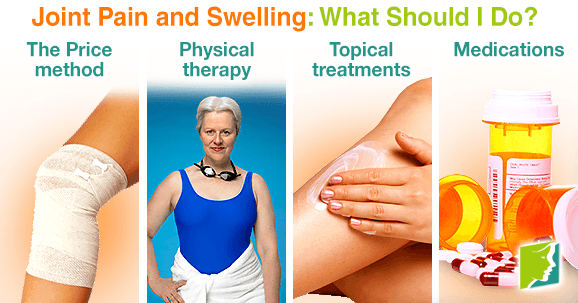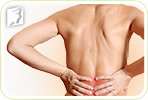Joint pain and swelling is a problem generally associated with arthritis, but can also be associated with injury or infection. Certain home remedies can be effective for the less serious forms of joint pain and swelling, and sometimes regular use of these treatments is recommended as the best way to keep discomfort at bay. Keep reading to find out more about what you should do if you are suffering from joint pain and swelling.
The PRICE Method
The PRICE method is the best way to both avoid future injuries and unnecessary joint pain as well as being a useful treatment for when you are suffering from the problem. It consists of the following steps:
Protection. In order to prevent frequent flare-ups, the best advice is to take necessary measures to protect the body. This can include using a compression bandage while engaging in physical activity, stretching, and wearing suitably supportive footwear.
Rest. For the first couple of days after an injury, resting the joint and avoiding activity is highly recommended.
Ice. One of the oldest tricks in book for swelling and to help increase blood circulation is to use ice for the first two to three days after injury occurs. Apply a cold pack or ice wrapped in a towel directly to the area affected for around 15 - 20 minutes at a time, every couple of hours.
Compression. Use a bandathege or joint support to bind the area in order to reduce lasting damage and mitigate swelling.
Elevation. Elevating the joint so that it is higher than the head is ideal and can aid the healing process. This is also useful for people with arthritis and other joint problems.
Physical Therapy
Physical therapy has been shown to be effective across the board. It is often a combination of treatments that range from the hot and cold method listed above to more sophisticated actions, such as using ultrasound, laser therapy, and diathermy. Diathermy is the process of administering short heat waves into the tissue. Ultrasound is often used to reduce swelling and help with scar tissue in the joints, while laser therapy has also been deemed helpful.
Things like massage, rest, and certain exercises are also part of the physical therapy recommendations. Swimming is one of the best forms of exercise, as it puts no pressure on the joints. Walking and other low-impact forms of exercise can also be helpful. They are recommended because increasing the strength of the muscles surrounding the joints can aid in minimizing damage, pain, and swelling.
Topical Treatments
Topical treatments using menthol-based products can be particularly useful for pain and swelling related to injuries, such as sprains, pulled muscles, or ligament tears. There are a variety of options available at most supermarkets or as a prescription. The ingredients are generally comprised of menthol, camphor, and other natural extracts that stimulate blood flow and circulation, are anti-irritants, and have mild painkilling properties. These are particularly good if you are unable to take anti-inflammatories.
Medications
Avoid routine use of aspirin and other non-steroidal anti-inflammatory medications, as they can have an adverse effect on the gastrointestinal tract. If these must be taken, try deglycyrrhizinated licorice (DGL), as this will at least aid the protection of the digestive system. Ideally, use of these should be stopped as soon as is practical.
If you think you are suffering from any form of arthritis, it is advisable to meet with a physician to discuss the problem, and in order to alleviate pain and create a treatment plan. For joint pain related to injuries or infections, it is also a good idea to see a doctor. It should also be remembered that engaging in exercise that can strengthen the muscles around the joints in question can be very beneficial.
Sources
- Murray, M. & Pizzorno, J. (1998). Encyclopedia of Natural Medicine. Three Rivers Press. New York. P.703-4
- National Health Service UK. (2013). Arthritis. Retrieved January 26, 2015, from http://www.nhs.uk/Conditions/Arthritis/Pages/Introduction.aspx
- National Health Service UK. (2014). Sprains and strains - Treatment. Retrieved January 26, 2015, from http://www.nhs.uk/Conditions/Sprains/Pages/Treatment.aspx
- National Institutes of Health. (2014). Joint swelling. Retrieved January 26, 2015, from http://www.nlm.nih.gov/medlineplus/ency/article/003262.htm




